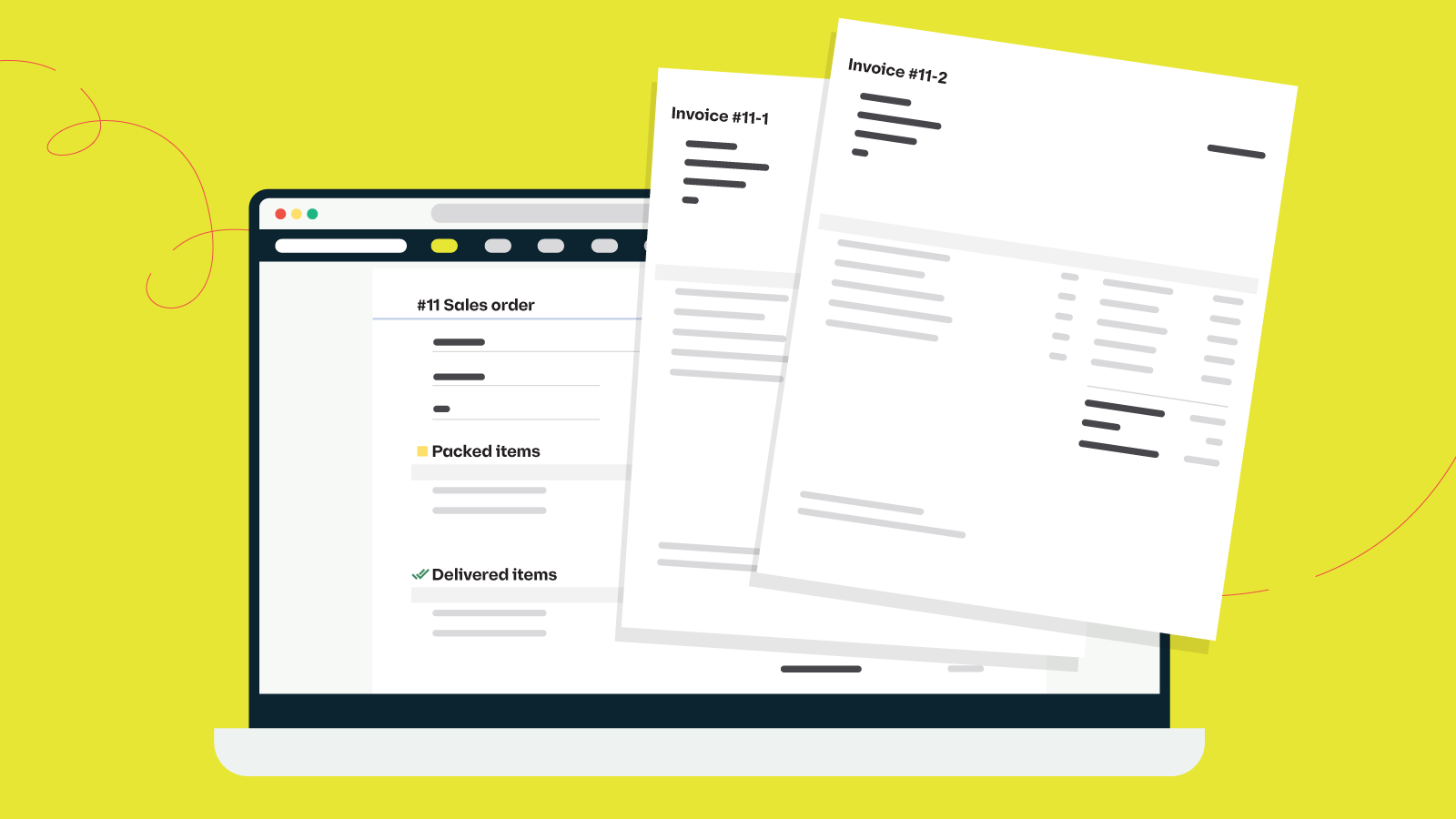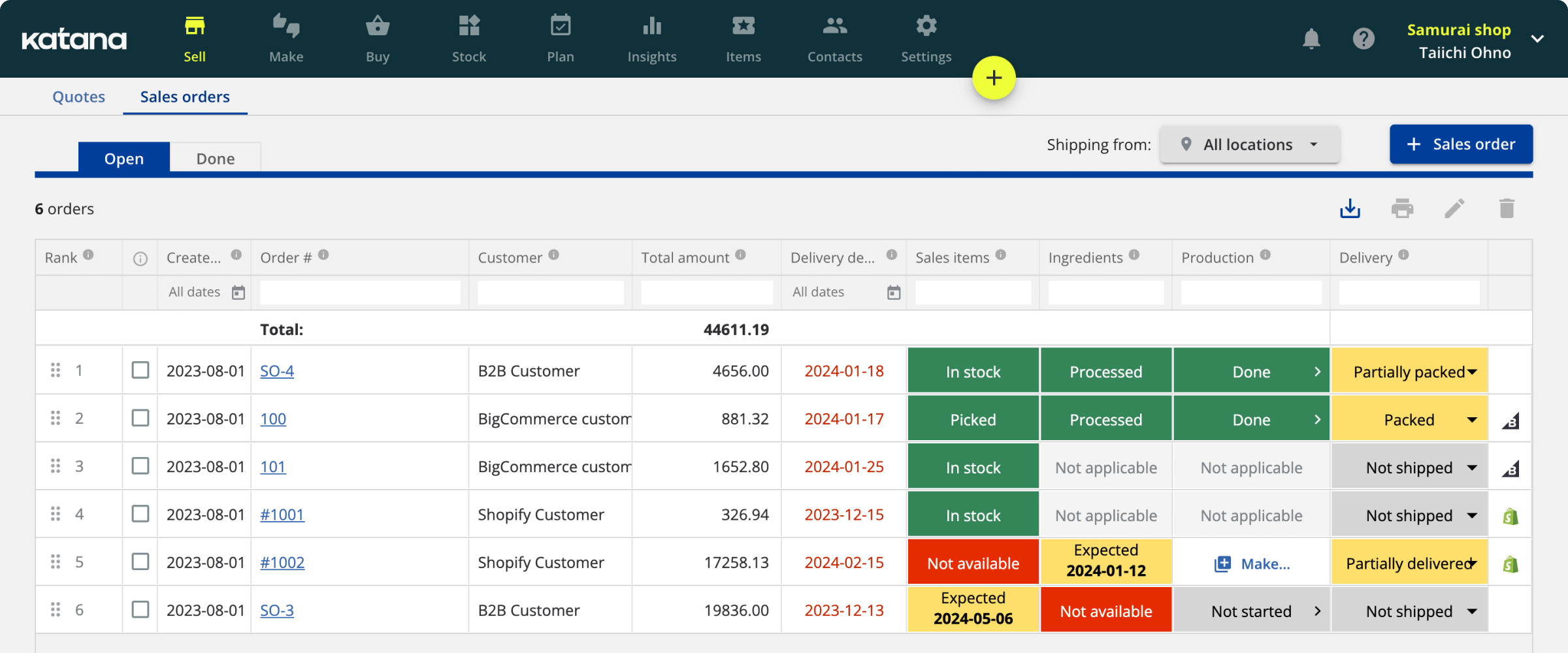6 ways paperless manufacturing will skyrocket your business
Here we delve into paperless manufacturing, how it can change your business today, and how it’s going to affect manufacturing businesses of the future.

James Humphreys

There’s no better feeling on this earth than holding a freshly printed, warm batch of documents. The vaguely familiar scent is one that most of us can recall, even as we sit behind our desks, miles away from the copy machine.
But as beautiful a moment as this can be, there can also be no doubt that manufacturers are fast leaving this way of doing things behind. Whether taking stock, scheduling production, or writing bill of materials, many modern manufacturers have found that paperless manufacturing is the way forward.
The future is here, and it’s come in paperless manufacturing. Soon enough, every manufacturer up and down the globe will be using software solutions to run their business. But what software will they switch to, and what are the benefits?
Paperless manufacturing software
Paperless manufacturing uses software-based solutions to manage production and keep track of records. There are many reasons why it’s fast becoming the norm among growing manufacturers. After all, paper is costly, slow to file, and highly prone to human error, among other things.
Printers might give us heavenly warm batches of documents, but they also decide to test us at every opportunity.
Paperless manufacturing tackles all these issues, but it does a lot more than that because these software solutions are not based on the paper systems of yore.
They were created to serve the needs of the modern manufacturer that wants to grow fast. One that needs to be on the ball, able to make decisions in real time and fulfill sales orders on demand.
The advantages of adopting paperless manufacturing
Moving your manufacturing further into the virtual world has plenty of benefits.
Benefits that could help over 80% of small to mid-sized manufacturing plants in the USA still use paper forms and manual keyboard data entry to track their inventory and manufacturing operations.
Here are just six of the most impactful advantages paperless manufacturing can bring.
1. Increase your productivity

Scheduling production is the bane of many a manufacturer.
Knowing which tasks need to be done when, as well as keeping track of progress, can be a headache when everything is being noted on paper.
Good paperless manufacturing systems totally overhaul this process by displaying the tasks needed for each order to your team and allowing them to update progress with a click of a button.
This way, your team knows what they need to be doing at any moment, and you can see how things are progressing without the need to track logbooks or chase people up for updates.
Notes can be left on the system, which removes the need for a constant physical back and forth. It’s just a much more efficient way to run your manufacturing floor — an effortless production planning strategy.
And the benefit here is two-fold. Because not only does it streamline your manufacturing processes, but it also gives everyone more time to improve them rather than being hindered by them.
Win-win.
2. Up your innovation
Following on from the previous point, a paperless manufacturing environment is going to give your team the time and space to focus on improvements. This comes as a result of the immediacy with which you can track and update data through software.
It’s a way of allowing everybody to utterly focus on the vitals of their roles rather than spending half their days filling in logbooks and chasing people up. This means your team can quickly grasp the daily details and move on to the bigger ideas instead.
That could mean reducing your manufacturing overheads or improving your inventory management.
Plus, this system also fosters cross-team collaboration as everyone is now working on the same page — even if that page is paperless. You can imagine it’s a lot easier for you to coordinate large-scale marketing campaigns if you can immediately understand your current lead times.
3. Run in real time

The budget for paperless manufacturing system implementation totally depends on the software you decide to go with. As a rule of thumb, aim for systems that already look user-friendly and easy to set up. Then you probably won’t have to pay anything at all.
Manufacturers require another element that paper does not provide — immediacy. In other words, the ability to make decisions quickly based on accurate data.
Because using paperless manufacturing software means you can update your data in real time, so your inventory and production schedule can always be up to date.
You don’t need to physically search for answers or use the copy machine to transfer documents from one folder to another.
Instead, you can just click around your software and find what you need immediately, knowing that it is up-to-date information.
Katana cloud manufacturing software, for example, takes this even further by throwing some automation in the mix.
One of its features is that you can prioritize orders by dragging and dropping them in your desired order. Then the system will automatically calculate the expected delivery times and the raw material availability for each order.
You know exactly when to purchase more materials and can adjust the priority of orders on your master production schedule instantly.
Now imagine trying to figure that out yourself, using paper records and a calculator. A whole other ball game, right?
4. Increase data accuracy
Controlling versions of your data is a struggle when using a paper-based model. In general, documents are read and updated one at a time, with a delay included for finding and writing up.
Using a paperless manufacturing system means keeping your data accurate and up to date. Often, a field will be limited by the number or type of characters in the software, so you cannot make significant errors.
This way, you reduce the likelihood of human error while keeping records as accurate and up to date as possible.
5. Save costs
Paper is expensive.
On average, businesses spend $1500 a year on filing cabinet costs. That’s not even mentioning printer, storage, and maintenance costs.
That means going paperless is going to eradicate this cost almost entirely. Of course, you might find it difficult to let go of the paper world completely. Invoices and reports may need printing, sometimes due to agency and customer requests.
Plus, having things printed out in front of you can sometimes help you gain a different perspective. We’ve all felt that reading physical books has a certain magic that eBooks can’t deliver.
But we’re not reading Dante’s Inferno or the works of Shakespeare here. And by reducing your paper costs, your business will become a lot clearer in the financial books and its focus.
Clear office, clear mind.
Pro tip: Want to start moving paperless straight away? Here’s a free manufacturing spreadsheet template you can use it to keep track of your inventory in the detail it deserves.
6. Improve your image
Nowadays, the environmental impact of manufacturing is scrutinized more than ever.
52% of consumers believe manufacturers should take responsibility for the planet’s future. And paperless manufacturing goes one step further to achieve that.
So not only can you do good for mother earth here, but you also improve your brand’s image by highlighting your practices to customers. Why not let them know that most of your manufacturing business is run paperless, using cloud manufacturing software, where data is stored virtually?
How to go paperless in manufacturing
Going paperless in manufacturing can efficiently reduce paper usage, improve productivity, and enhance sustainability efforts. The following actions can assist you in going paperless in manufacturing:
- Assess your current paper usage: Identify the processes used and the volume of paper used. This can help you identify areas where paper can be eliminated or reduced.
- Use digital documents: Implement digital documents to replace paper-based forms, reports, and manuals. This can include using electronic signatures, forms, and invoices. Use cloud-based storage and collaboration tools like Google Drive, Dropbox, and Microsoft OneDrive to store and share digital documents.
- Use electronic data capture: Replace paper-based data capture processes with electronic methods. This can include using barcodes, RFID, and other electronic devices to track inventory, work-in-progress, and shipments.
- Implement a paperless system: Implement an enterprise resource planning (ERP) or a manufacturing execution system (MES) that enables paperless production and operations. These systems can streamline processes, reduce paperwork, and improve data accuracy.
- Train your workforce: Provide training to your employees to help them adjust to the new paperless processes. Encourage them to use digital documents and devices and provide the necessary tools and support.
- Monitor and optimize: Monitor your paperless processes and identify areas where you can further optimize or automate. This can help you continuously improve your operations and reduce waste.
By implementing these ways to go paperless in manufacturing, you can gradually reduce paper usage in your manufacturing operations and improve efficiency and sustainability.
Using software to go paperless

Paperless is the way forward — no doubt about it.
We can already see how augmented reality is starting to creep into the manufacturing sphere, as digital headsets will soon be able to give heads-up displays for workers on the floor.
It won’t be long before you can see your stock levels and energy requirements by looking at them using high-tech glasses.
That is why it is best to get on board with paperless manufacturing as soon as possible. Paperless MRP systems certainly won’t be based on paper and won’t be waiting around either.
But it’s a big step for many manufacturers stuck in the old ways.
And the reality is that businesses have to strategize carefully when going paperless. Make sure company culture shifts smoothly and that it is implemented in a way that the team is on board with the whole process.
Thankfully, good software solutions will support manufacturers setting up their paperless manufacturing software for the first time.
So, it’s always best to get in touch with them and talk directly, letting them know your needs.
Software is the simple answer to implementing a paperless manufacturing workflow for a manufacturing business because it lays your sales orders out for you from start to finish — stock to material availability to production to delivery.
Katana manufacturing software is an all-in-one solution designed for modern manufacturers wanting to go paperless.
It provides you with a visual, color-coded platform to unify your inventory, production, and sales without resorting to paper documents.
Alongside providing the benefits that we’ve gone through as a paperless system, it also offers:
- On-demand access to your manufacturing costs
- Sync accounting with your QuickBooks
- Finished goods tracking and material inventory
- Production scheduling software functionality
- Paperless production floor-level control for manufacturing
- Integration with Shopify, WooCommerce, and other e-commerce channels
- Efficient material purchasing plans
- The opportunity to ditch inefficient excel spreadsheets forever
- A way to keep your entire business workflow on a single platform
Going paperless gives you the tools to run your manufacturing business without getting bogged down in meaningless daily rituals.
Instead of spending hours scheduling production and managing inventory, you can allow a paperless manufacturing process system like Katana to do the hard lifting for you, which lets you make fast decisions based on accurate data.
That way, you and your team can find time to focus on the tasks that matter — innovating your product, supporting customers, and growing your business.

James Humphreys
Table of contents
Get inventory trends, news, and tips every month
Get visibility over your sales and stock
Wave goodbye to uncertainty by using Katana Cloud Inventory for total inventory control
